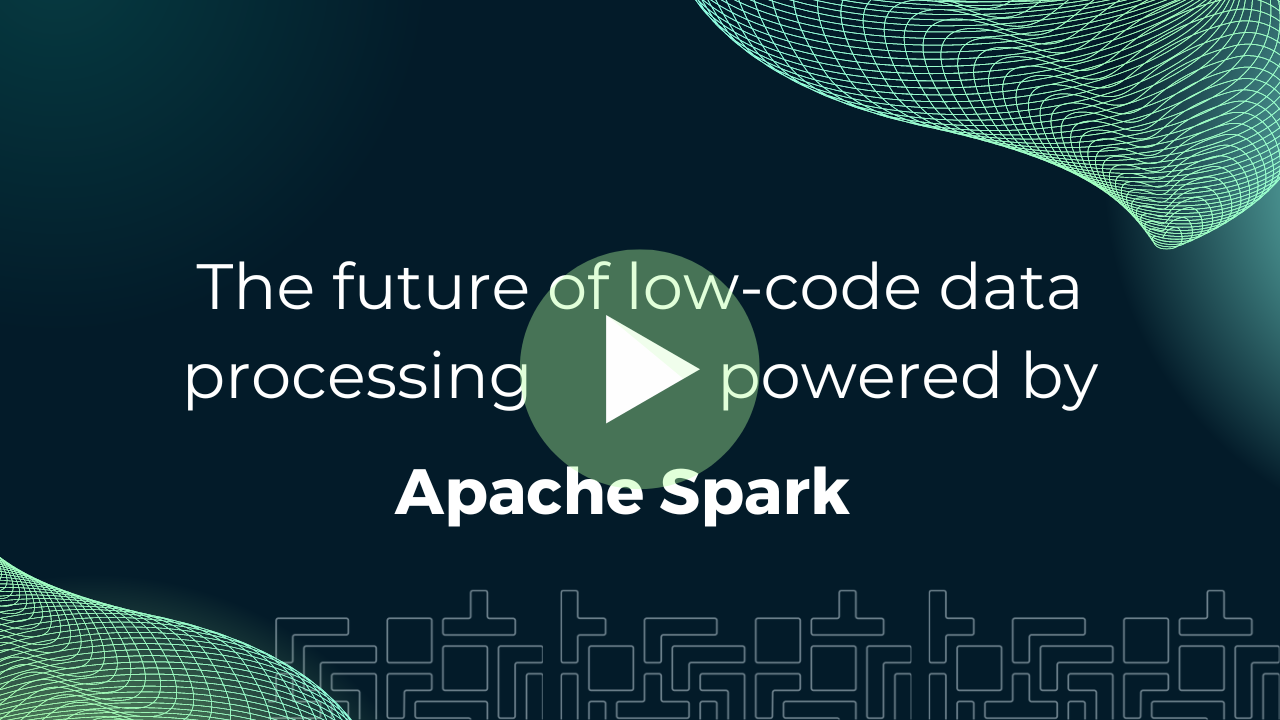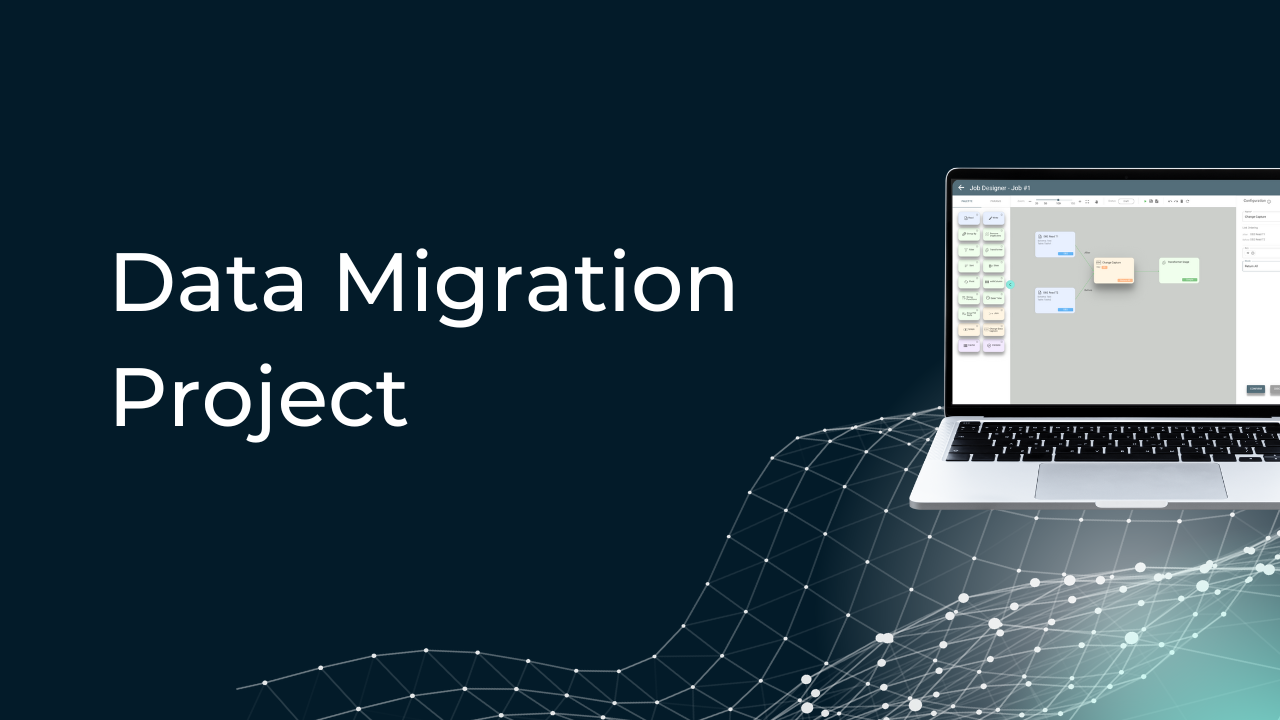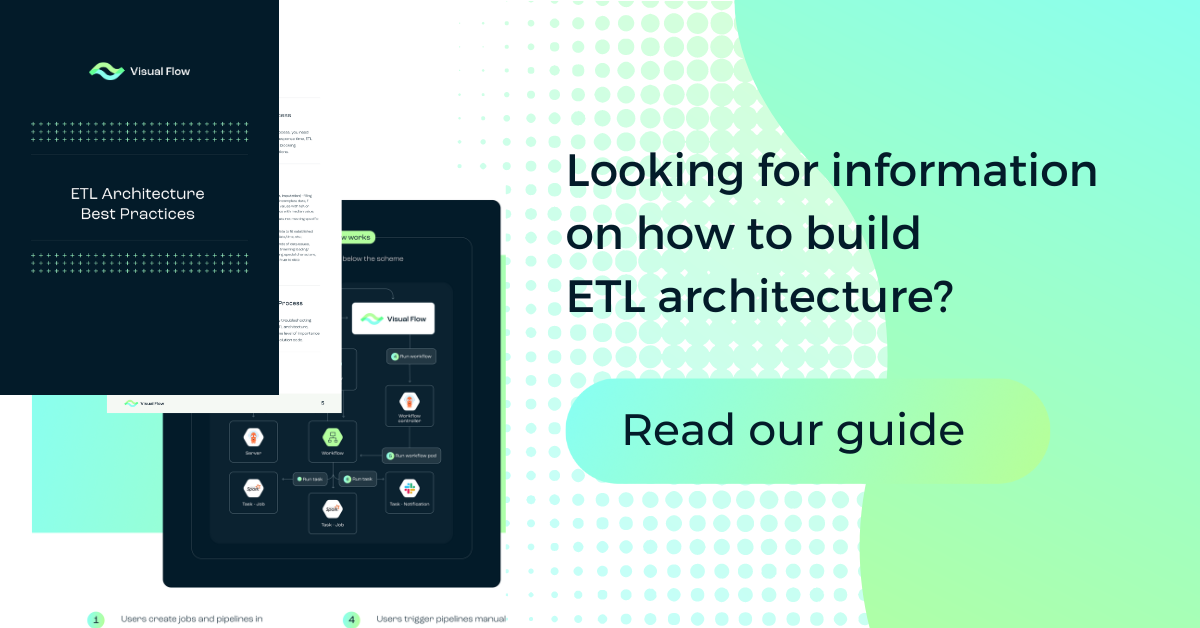Table of Content:
Table of Content:


The development of Apache Spark—along with supporting resources, such as Visual Flow—changed the way enterprises store, manage, and access their increasingly valuable data. Fortunately, there are many tools available that can be used for calculating the cost of running Apache Spark. The widespread growth of cloud computing and data storage solutions has helped to store larger quantities of data than ever before.
As we will further explain in this guide, the use of cloud computing has helped eliminate significant infrastructure costs, such as the need for enterprises to build their own data storage facilities and other necessary infrastructure. However, as you might expect, taking advantage of cloud computing services at the enterprise level will still create some necessary expenses.
That is why it is so important for anyone hoping to use Apache Spark ETL to carefully consider the data storage options and solutions that are currently available. In this comprehensive guide, we will answer some of the most common questions about running Apache Spark ETL on the cloud: the associated costs, and how to find the solutions that will help your organization achieve its long-term goals.
Apache Spark ETL Overview
First, let’s start by explaining what Apache Spark ETL actually is. Originally launched in 2014 and most recently updated in 2023, Apache Spark is an open-source engine that allows organizations, among other things, using data to engage in all three steps of the ETL process.
The “ETL process”, in this case, is a data warehousing process that involves extracting data from multiple sources, transforming data into a clean and usable format, and loading the data in an external output “container.” This process allows organizations to work with large volumes and different types with help of applications as Visual Flow—an open-sourced with a unique drag-and-drop interface—along with various others. When creating a customizable ETL solution, whether using Apache Spark ETL or other alternatives, users will need to decide where to store their data. For both cost and simplicity purposes, one of the most common options will be using the cloud.
Understanding Cloud Computing
In an era where data is considered one of the most valuable resources available, cloud computing continues to play an increasingly important role. As described by Microsoft, “Simply put, cloud computing is the delivery of computing services—including servers, storage, databases, networking, software, analytics, and intelligence—over the internet (the cloud) to offer faster innovation, flexible resources, and economies of scale.”
Cloud computing enables users to store and manage data without having to build their own independent infrastructure. In most cases, the cost of using “the cloud” will be directly tied to the amount of data processing you actually use (rather than charging a flat fee). Cloud services allow enterprises to easily scale up and scale down data management resources, both hardware and software, according to actual needs, and optimize costs. Some cloud providers can help you optimize your utilization and cost efficiencies when consuming cloud services with their automated monitoring tools, so you only pay for the resources you actually need. When demand drops, the auto-scaling tool will automatically remove any excess resource capacity to prevent overspending.

Apache Spark ETL on Cloud Platforms
As suggested, the capabilities of the modern cloud are rapidly expanding. There are many different cloud platforms available to choose from. Two of the most popular—especially for organizations with cost-focused, scalability needs—are Amazon Web Services (AWS) and Microsoft Azure. These platforms, supported by two of the most dominant companies in the broader tech industry, offer users a wide range of customizable options that can address their specific needs.
Both AWS and Microsoft Azure are cloud platforms that can be considered “containers” where the extracted, transformed, and loaded data can potentially be stored. Apache Spark helps make this initial process possible and the use of innovative tools such as Visual Flow can help make organizing and managing the data even easier.
Cost Considerations for Apache Spark ETL on Cloud
It is a common misconception that all cloud environments are the same—a subscription based platform that stores data, requires no hardware investment, and allows access from anywhere. The truth is that each cloud environment is configured differently, with distinct functions and capabilities.

If you have decided to use the cloud, you must have 100% visibility and comprehension of all organizational resources and workloads, including dependencies. You should also assess which workloads are best suited for the cloud based on various factors such as bandwidth requirements, data volume, and security and compliance considerations.
A sound idea to understand whether there are any cost advantages to capture is
to perform an expense breakdown using a calculator offered by a cloud provider
of your choice:
- AWS Pricing Calculator,
- Google Pricing Calculator,
- IBM Cloud Cost Estimator,
- Microsoft Azure Pricing Calculator
Keeping all variables in mind, it is easy to see how the “true cost” of using Apache Spark ETL to store content on the cloud can be incredibly variable. Let’s take a look at a closer example that will help further illustrate the cost structure.
Essential Cost Components
Here is an example of what a common cost schedule for AWS resources might look like:
| Service | Description | Time/Hours | Price | Cost | Estimation | |
| Elastic Container Service for Kubernetes | $ 15,60 | |||||
| Amazon Elastic Container Service for Kubernetes CreateOperation | Amazon EKS cluster usage in US East (N. Virginia) | 156 Hours | $ 0,10 | $ 15,60 | $ 72,00 | |
| Elastic Compute Cloud | $ 23,49 | |||||
| Amazon Elastic Compute Cloud NatGateway | NAT Gateway Hour / GB Data Processed by NAT Gateways | 157 Hrs / 0 Gb | $ 0,045 | $ 7,07 | $ 32,40 | |
| Amazon Elastic Compute Cloud running Linux/UNIX | On Demand Linux m5.large Instance Hour | 157 Hrs | $ 0,096 | $ 15,07 | $ 69,12 | |
| EBS | GB-month of General Purpose (gp3) provisioned storage – US East (N. Virginia) | 16,9 Gb | $ 0,080 | $ 1,35 | ||
| Relational Database Service | $ 3,34 | |||||
| Amazon Relational Database Service for PostgreSQL | per db.t3.micro Single-AZ instance hour (or partial hour) running PostgreSQ | 156 Hrs | $ 0,018 | $ 2,81 | $ 12,96 | |
| Amazon Relational Database Service Provisioned Storage | per GB-month of provisioned gp2 storage running PostgreSQL | 4,6 Gb | $ 0,115 | $ 0,53 | ||
| Elastic Load Balancing | $ 3,53 | |||||
| Elastic Load Balancing – Network | Network LoadBalancer-hour (or partial hour) | 157 Hrs | $ 0,0225 | $ 3,53 | $ 16,20 | |
| EC2 Container Registry (ECR) | $ 0,22 | |||||
| Amazon EC2 Container Registry (ECR) TimedStorage-ByteHrs | GB-month of data storage | 2,164 Gb | $ 0,10 | $ 0,22 | ||
| Data Transfer | regional data transfer – in/out/between EC2 AZs or using elastic IPs or ELB | 1,2 Gb | $ 0,01 | $ 0,01 | ||
| Total.Current: | $ 44,84 | $ 202,68 |
In this example, there are a few important details worth noting. In the service and description columns, the company clearly illustrates the specific services that are being utilized. In total, there are 8 different services undergoing the ETL process, each with varying degrees of importance and intensity.
The next three columns—time and hours, price, and total cost—help illustrate how the total cost of using Apache Spark ETL is calculated in real-time. As the table helps illustrate, not every service is charged the same rate (even when adjusting for volume). This is usually a result of the data’s complexity, which dictates the amount of work involved in the ETL process.
Finally, the estimation column illustrates what the enterprise can expect to pay for using the underlying service. In this specific example, the monthly cost amounts to $202.68, though this figure can vary depending on the enterprise—that is why there is no universal answer to the question “How much does it cost to run Apache Spark ETL on the cloud?”, regardless of whether the enterprise is using supporting resources such as Visual Flow.
Nevertheless, when keeping the previous variables in mind, organizations of all sizes can generate a general estimate of their future costs.
Conclusion
There have been several significant developments within the broader data storage industry, including the development of the Apache Spark ETL process, the widespread proliferation of the cloud, the enhancement of these systems through supporting tools such as Visual Flow, and many more.
Visual Flow has helped a variety of organizations streamline their broader data practices, enabling a wider variety of users to make changes and for enterprises—as a whole—to significantly reduce their data processing costs. By understanding how these sorts of systems are typically priced, as well as how these systems work, enterprises around the world can make better data management solutions.
To get an accurate estimate, use the cloud provider’s cost calculator tools. Find some links to them in the related section: Cost Considerations for Apache Spark ETL on Cloud. Also, it’s essential to optimize Spark jobs for performance to avoid unnecessary costs. Efficient code, appropriate resource allocation, and regular monitoring can help in managing expenses effectively. Feel free to contact us to get the quote for jobs optimization.
Visual Flow open source ETL tool, its use does not affect the cost of using Apache Spark ETL on the cloud.
Visual Flow is an easy to start solution, providing a user interface that streamlines the data management process. The user-friendly GUI enables ETL developers who unfamiliar with Java, Scala, or Python to combine and integrate data from various sources, thus facilitating advanced data analysis.
Contact us































































